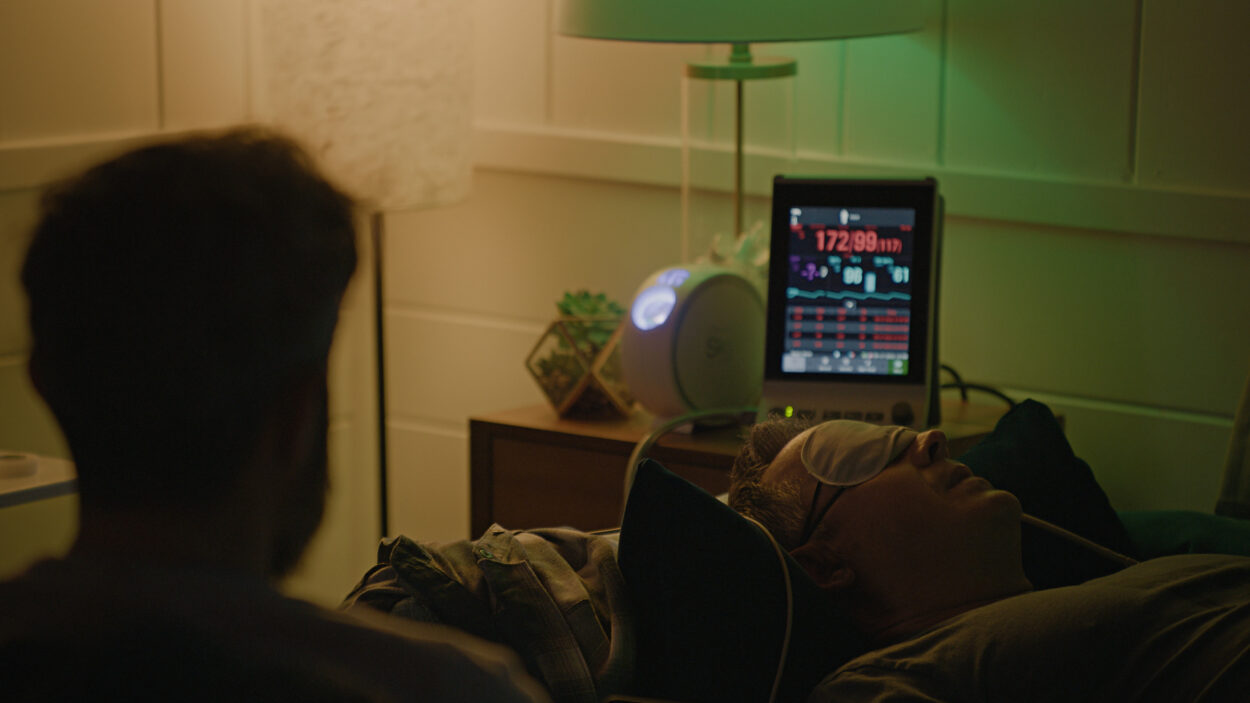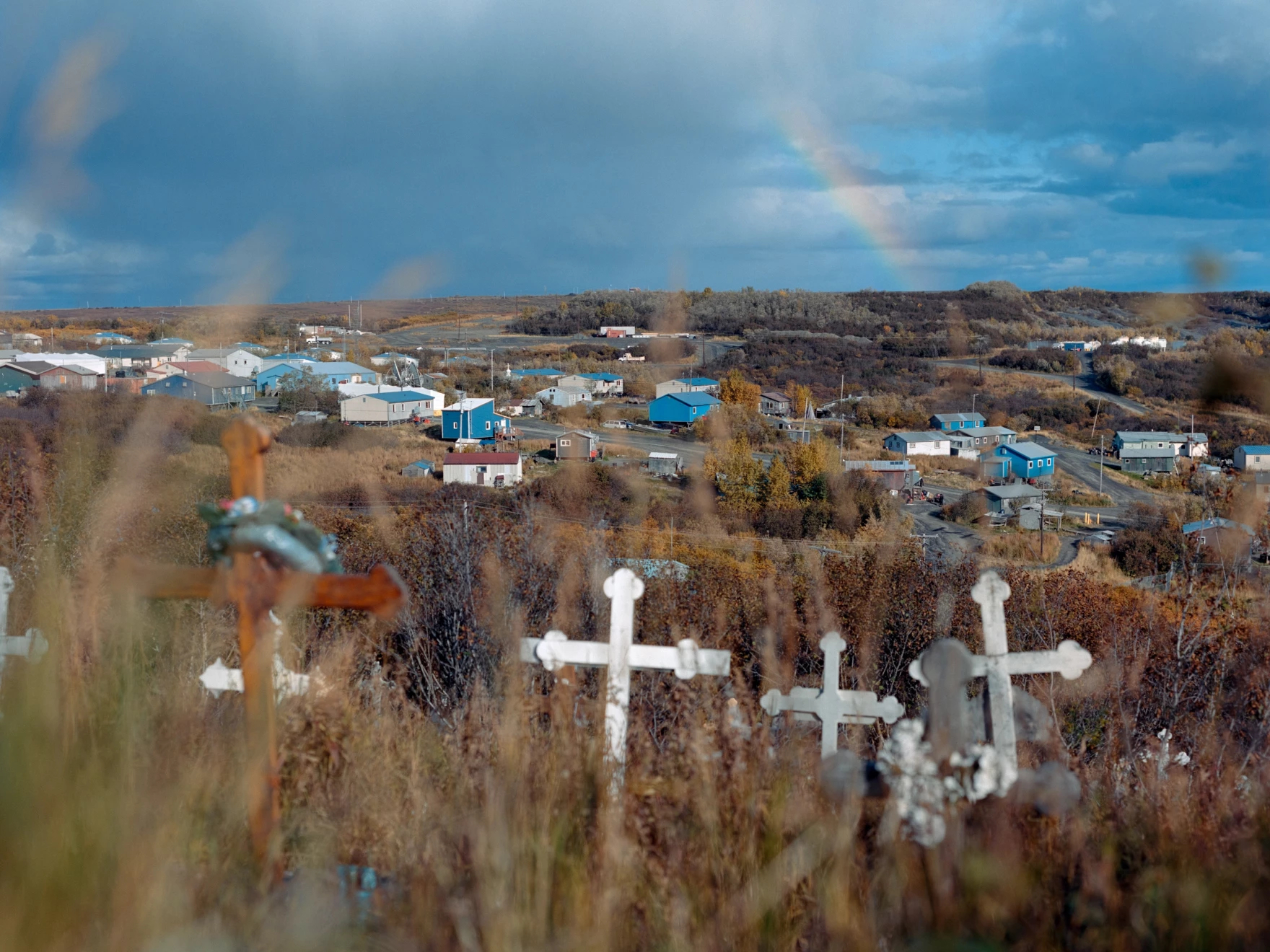Director's Works
An Act of Service Brandon Kapelow
Brandon Kapelow is a visual storyteller from Wyoming whose credits span work as a director, photographer and cinematographer. As a survivor of suicide loss at an early age, Brandon has a passion for exploring topics related to mental health, which is his current focus as a Documentary Film Fellow at Columbia University’s DART Center. Outside of his creative practice, Brandon is a peer-support facilitator for SOLACE and the American Foundation for Suicide Prevention, where he serves on their Ethical Reporting Advisory Committee.
Brandon's film ‘An Act of Service’ premiered on The New York Times Op-Docs, and documents the use of psychedelic-assisted therapies in treating workplace traumas among first responders. The film received the Best Documentary Award at the Aesthetica Film Festival, and was featured in Director’s Library and Short of the Week. Brandon is a winner of the 2024 Young Guns awards showcase, and his films have screened at numerous domestic and international festivals.
Brandon's ongoing body of work 'Somewhere I Belong' focuses on the issue of suicide in the American West, which for decades has experienced the nation's highest rates of suicide death. He has written and photographed stories from the series for TIME Magazine, NPR and Magnum Photos. The project received the 2023 Project Development Grant from CENTER Santa Fe, where Brandon has served as a photography mentor for military veterans seeking to explore stories pertaining to mental health topics.
An Act of Service -
Emergency workers and researchers use the term “critical incident” to describe a traumatic event. It’s estimated that people, on average, will experience two to three critical incidents in their lifetimes. My first came at 8 years old, when my father made his first suicide attempt. Five years and five attempts later, he was dead. I’ve been compelled to explore mental health issues — and their potential solutions — ever since.
Research has found that throughout a career, an emergency worker may experience over 180 critical incidents. While observing emergency workers in this documentary, I was amazed by their ability to work so calmly through crises and transition quickly in and out of their home lives. But I came to understand that there was a toll paid for this form of public service, as emergency workers experience rates of behavioral health issues that are notably higher than the general population’s. We depend on emergency workers to provide service during our most vulnerable moments, but these experiences place them critically at risk for issues like PTSD, substance abuse and suicide.
After more than a decade spent working as a peer-support facilitator in suicide prevention and postvention, which involves assisting survivors in the grief process, I slowly became aware of the growing body of evidence supporting psychedelic-assisted therapies as a medical intervention for the types of behavioral health issues I encountered. Like many, I was skeptical. But I eventually learned that major institutions like the American Foundation for Suicide Prevention (for which I volunteer) and the Department of Veterans Affairs have supported research into psychedelics such as ketamine. The V.A. even announced that it will fund new studies on MDMA and psilocybin-assisted psychotherapies.
I have previously written and reported that the American West has some of the nation’s worst outcomes for behavioral health issues such as substance abuse and suicide. Growing up in Wyoming, I also saw how the West is home to some of the country’s most conservative cultural and political views on psychedelics. In making this film, I wanted to address that gap and challenge the assumptions of what a typical psychedelic user can and should look like.
This philosophy led me to Captain Christensen, a firefighter in Idaho who is undergoing ketamine-assisted psychotherapy to treat his PTSD. I hope that his story can become part of a new paradigm for approaching mental healthcare and shift the public conversation toward the experiences of the individuals facing mental health challenges who stand to benefit from these therapies.
Canadian Cancer Society, "Breathe Hope" -
When Angus Pratt was diagnosed with stage IV lung cancer, he was given a 5% chance of surviving for five years. That was six years ago, and today Angus lives on as a fierce advocate for cancer patients and survivors both locally in Canada and on the international stage, traveling abroad to lend his voice and lived experience to the expert forums leading the global conversation on cancer research.
Angus’ passion is for reducing the stigma surrounding lung cancer - a consequence he feels has resulted from years of messaging around anti-smoking campaigns that have left the public feeling that victims deserve cancer as result of lifestyle choices they’ve made. As a lifelong non-smoker, Angus is a living testament to the individuals who are excluded from that narrative, and his focus is on changing the language that gets used to talk about his disease. Angus wants the world to know that anyone with lungs can get lung cancer. Despite being the deadliest form of the disease, the stigma surrounding lung cancer has meant that only .1% of cancer donations are contributed towards lung cancer annually.
Angus has dedicated the remainder of his life to combatting this critical issue about which he is so deeply passionate, and to help alleviate the burdens on his peers who struggle with the stigma and discomforts caused by an advanced cancer diagnosis. Drawing on his background as an EMT, he works closely with the Canadian Cancer Society as a patient advocate, a policy advisor, and a peer-support facilitator both through in-person gatherings and online forums. The story traces Angus’ involvement in each of these core aspects of his advocacy work, serving as a testament to the many ways in which we can enrich the lives of others through vulnerability and sharing our struggles.
NPR -
Alaska’s Yukon-Kuskokwim Delta - where village communities are facing overlapping threats from climate change, substance abuse and domestic violence - is home to the nation’s highest rates of suicide. Indigenous leaders at the Center for Alaskan Native Health Research (CANHR) have taken a unique approach to this issue by studying a Yup’ik culturally-based model to suicide prevention in Alaskan Bush villages that focuses on community strengths and protective factors, rather than risks alone. Their initial data were so promising that the Department of Defense recently awarded them a multi-million dollar grant to try and replicate their study on remote Alaskan military installations.













